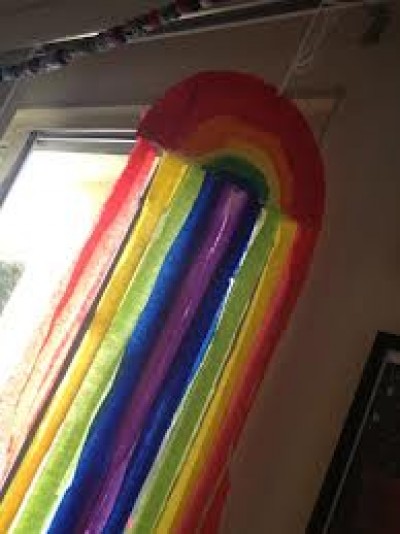How to Add Multi Colors In Brushes

Adding multiple colours to a brush is not a difficult task, and the convenience in drawing a painting it provides makes this process worth doing. For example, if you want to draw a rainbow, pore a small quantity of seven different colours on a brush and you can draw the rainbow in one stroke. The technique is to drop a small amount of colour next to each one in a way that they are not mixed together and once you use the brush each colour appears clear and transparent. If you want to give an impression of mixed colour then you can add them closer to each other’s edge.
Instructions
-
1
Prepare Your Tools and Accessories
First of all ready your tools and accessories for use. This includes paint, brush and a piece of paper or any other material on which you want to draw your painting or any other piece of art. -
2
Flat Brush
Remember adding more than one colour to a brush needs a considerable amount of space on the brush. So take a flat brush. For multiple colours technique, you cannot use a round and fan brush, it can hardly have space for more than one colour. If you do not have flash brush, try to flatten it as much as you can and ready it for use. -
3
Paints of Separate Colours
Take out a plate or a wider pot to pore in a small quantity of paints of different colours separately. You can also use a painting palette with dimples to keep paint of each colour in a distance to each other. Do not let the paint mix into each other if you want to give your art a touch of all colours clearly different. -
4
Application of Each Paint
Use a small round brush to dip into each colour and then apply the colour on a flat brush. Try to make a considerable small spot in it with the colour you select, but make sure that flat brush part saturates with the paint. Make sure you pour the colour on the flat brush in one attempt and the process does not disturb the hair of the flat brush. -
5
Application of Remaining Colours
Apply paint of all colours the way you did for the first time. Dip the small and round brush into the each dimple and pore the colour on the flat brush. Once you have covered one side of the flat brush, turn it around and complete the process on the rest of it. -
6
Painting
After you have filled the flat brush with all colours you have selected for the piece of art, paint it on the piece of paper, wood or of any other material that you have picked for you art work. This should give a unique and beautiful reflection to your art piece.







